In publicly accessible buildings, during a fire alarm emergency, elevators are inaccessible. The “Area of Refuge” or “Area of Rescue Assistance” concept was established to provide a safe location for building occupants, who cannot traverse the stairs without assistance, to assemble and await help or instruction from first responders. This designated space requires a two-way communication system for assisted rescue during an emergency.
An Emergency Communication System for Rescue Assistance is required, by industry standards NFPA, IBC and ADA, at each elevator or bank of elevators, on each accessible floor above/below exit discharge, so the trapped parties can call for rescue assistance.
While the function of the area doesn’t change, the location and terminology used sometimes does. The safe location, in interior stairwells, elevator landings, or building exteriors, can be referred to as an ‘Area of Refuge‘, ‘Area of Rescue Assistance‘ or ‘Elevator Landing Two-Way Emergency Communication‘
Area of Refuge (Interior Stairwells) 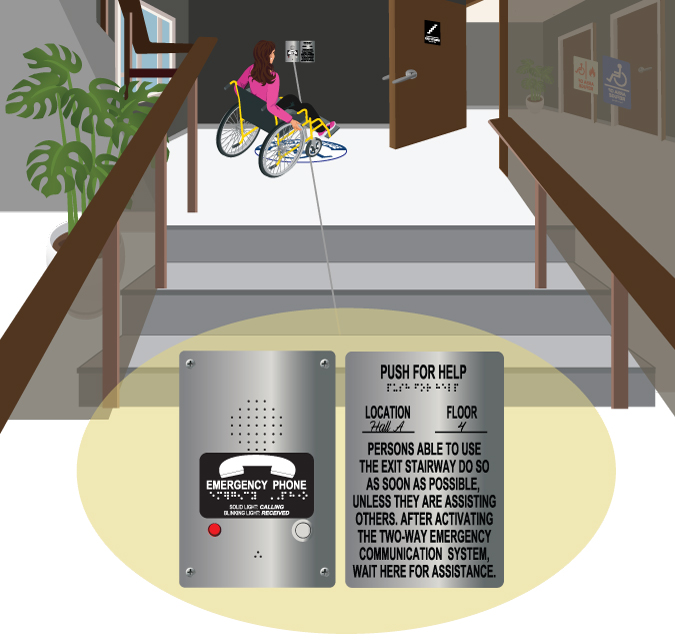 Required signs state ‘Area of Refuge’ 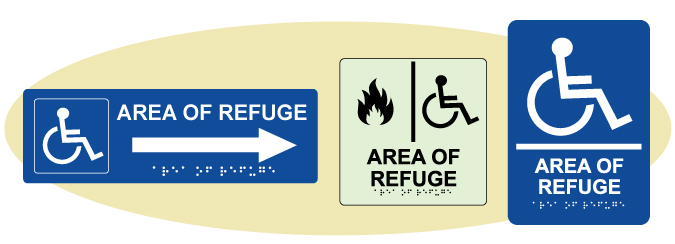 | Elevator Landings (Emergency Communication)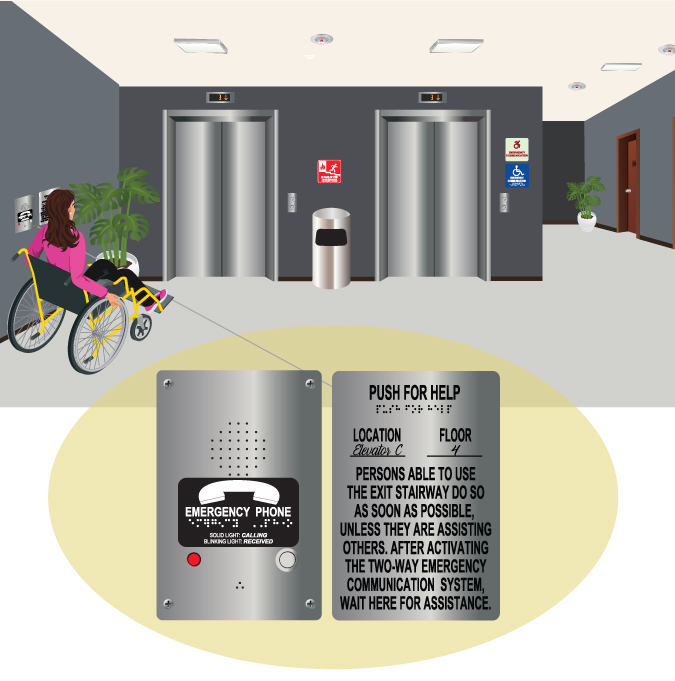 Required signs state ‘Emergency Communication’  |
Area of Rescue Assistance (Building Exterior)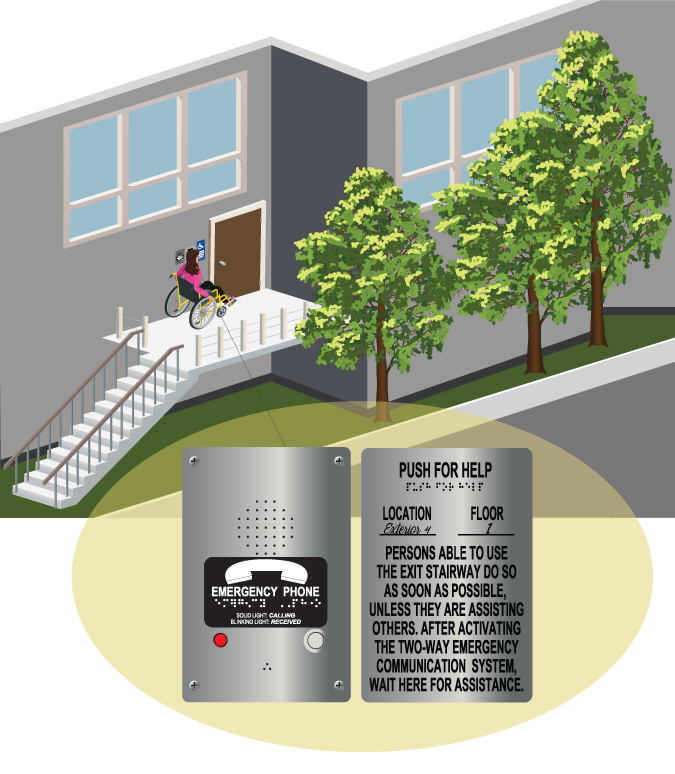 Required signs state ‘Area of Rescue Assistance’ 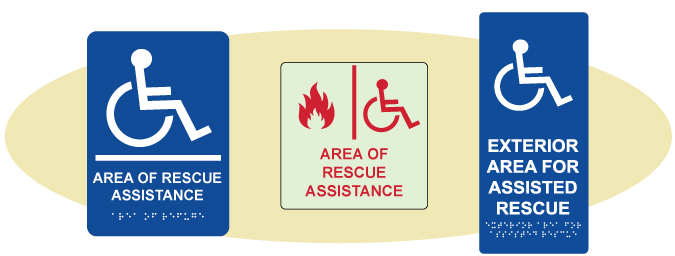 | How Two-Way Communication Works The emergency button on the Call Box is pushed. It first rings at the Central Control Point (Base Station) and, if not answered, will transfer to a location staffed 24 hours a day by emergency personnel. An audible dialing and a location message (plays when the call is answered) along with a visual indicator confirming that the call has been received. Once the location message has played, two-way communication will occur. The calling party in the elevator landing cannot stop the call once the button is pressed   The Central Control Point (Base Station) hears an audible signal that a Call Box is activated. By lifting the handset and press the lighted button, two way communication is established. The call can then be placed on hold, place a call to rescue services and then reconnect with the calling party. Only the base station or emergency services can terminate the call |
